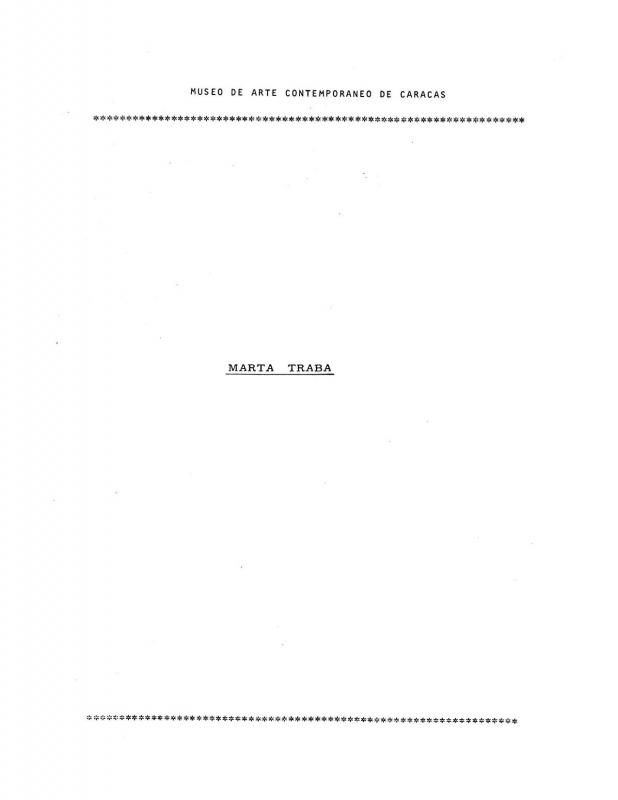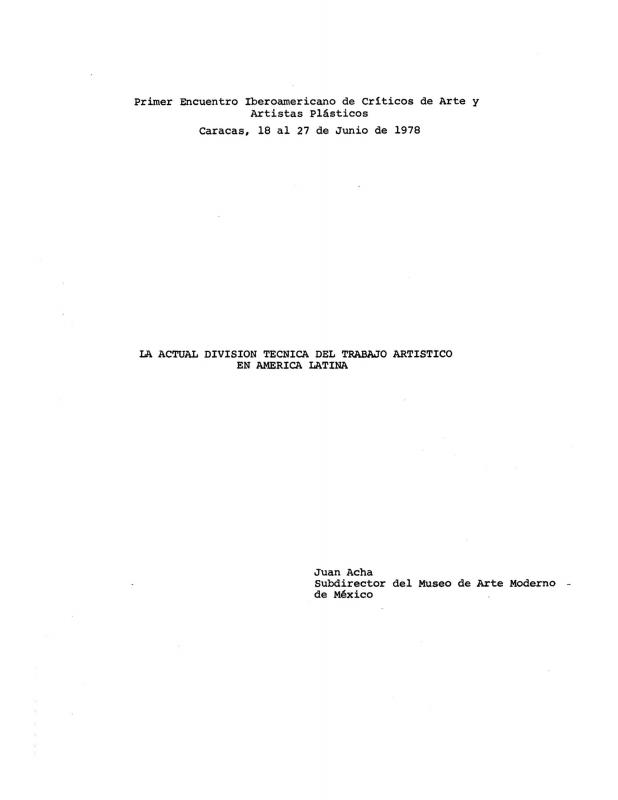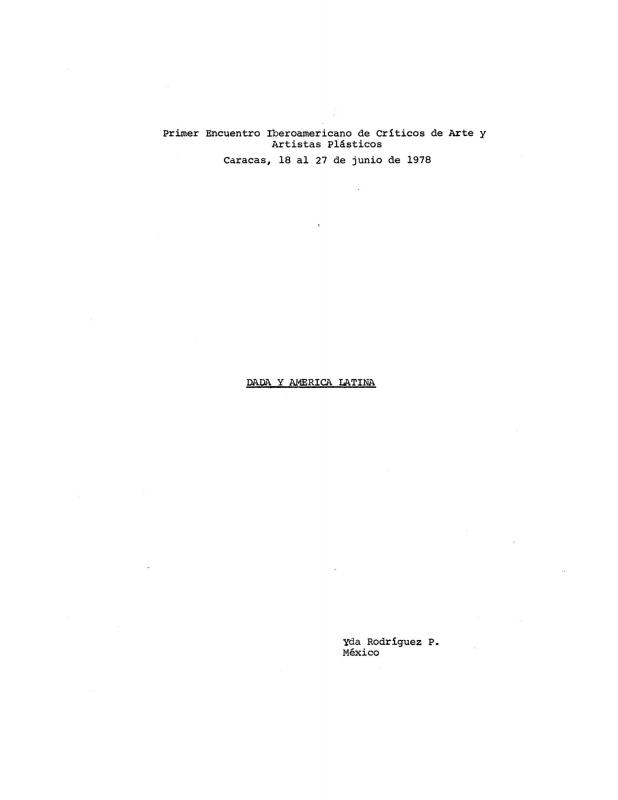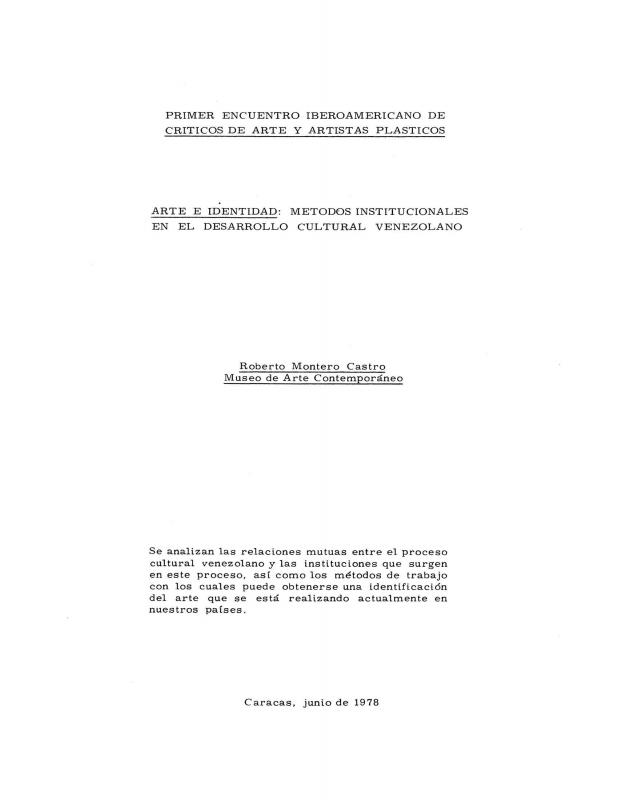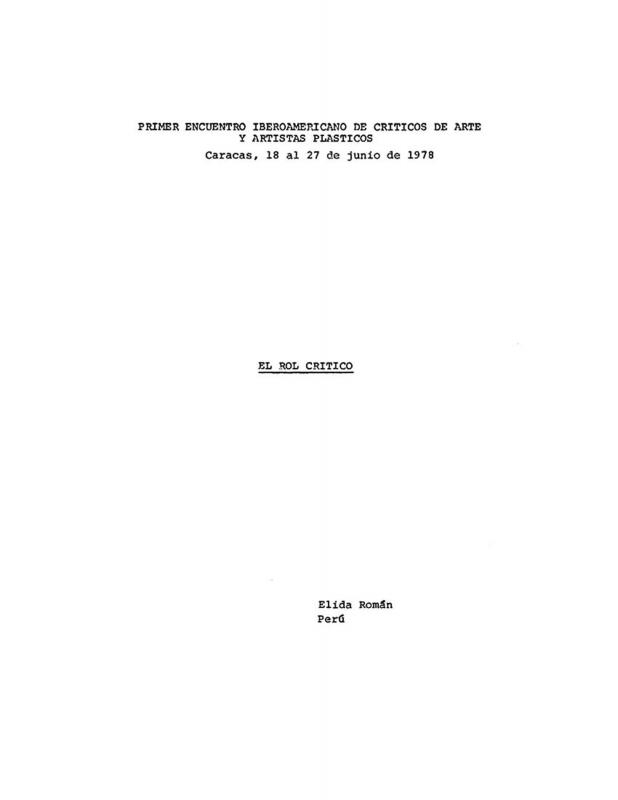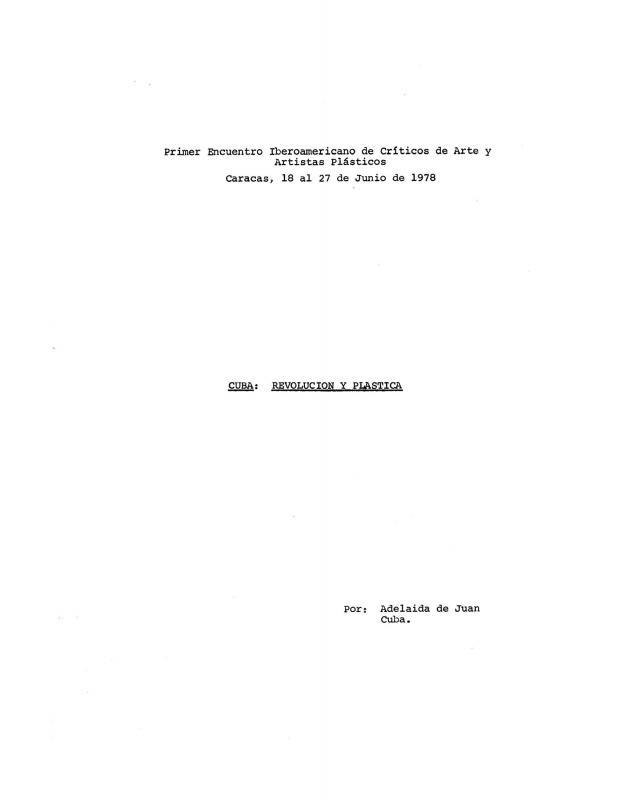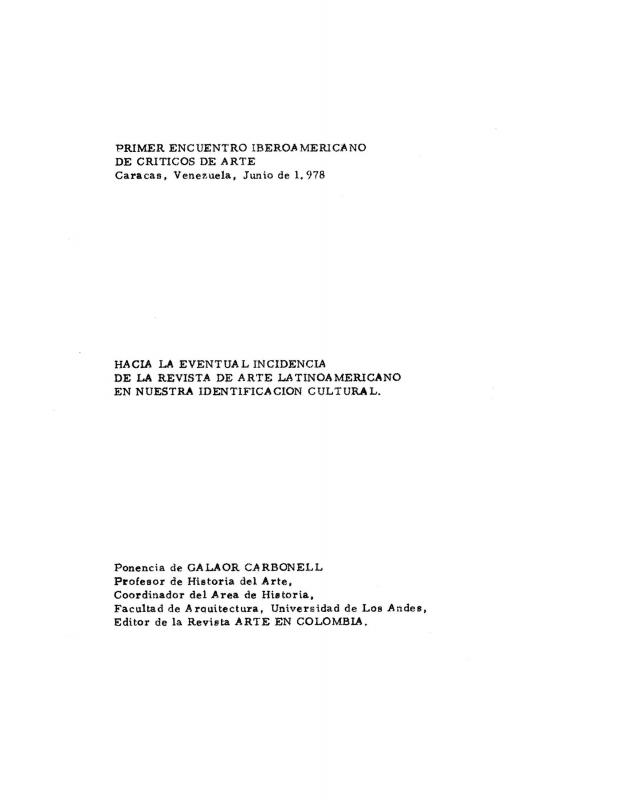In this lecture the Argentinean artist Antonio Berni (1905–81) discusses a wide range of issues related to art and art criticism with all his usual heartfelt passion, and raises a number of questions concerning art produced in Latin America. He speaks at length about the importance of the Primer Encuentro, the event organized in Caracas which, he suggests, would “undoubtedly be the basis for future cultural activities in every Latin American country.” His presentation at the Encuentro is particularly significant because it addresses real, practical problems in “artists’ everyday life” by showing critics the importance of the “concept of what is practical” and by reminding them of their habit of shying away from subjects that are thought to “debunk the artist’s image of purity.” Berni discusses things like copyright, TV monopolies, journalism, the radio, and publishing houses. He also explores the complicated relationship between artists and critics in both developed and underdeveloped countries. Finally, he states: “I do not advocate a policy of isolation; instead I propose a new relationship based on intellectual equality.”
The Primer Encuentro Iberoamericano de Críticos de Arte y Artistas Plásticos was held in 1978 at the Museo de Bellas Artes in Caracas. In addition to Antonio Berni, the list of attendees included other important figures in the world of art and art criticism, such as Jorge Alberto Manrique, Marta Traba (see “La tradición de lo nacional” [doc. no. 815744]), Juan Acha (“La actual división técnica del trabajo artístico en América Latina” [doc. no. 815489]), Carlos Areán (“Iberoamérica y su identidad artística y cultural” [doc. no. 815730]), Julio Le Parc (“Interrogantes” [doc. no. 815575]), Carlos Rodríguez Saavedra, Jacqueline Barnitz, Berta Taracena (“Elementos constantes en el arte iberoamericano” [doc. no. 815558]), Ida Rodríguez Prampolini (“Dadá y América Latina” [doc. no. 815758]), Roberto Montero Castro (“Arte e identidad: métodos institucionales en el desarrollo cultural venezolano” [doc. no. 815631]), Marco Miliani, Alirio Rodríguez, Jorge Glusberg (“Aproximación metodológica para una comprensión de la retórica del arte latinoamericano” [doc. no. 815475]), Élida Román (“El rol del crítico” [doc. no. 815617]), Adelaida de Juan (“Cuba: revolución y plástica” [doc. no. 815544], Galaor Carbonell (“Hacia la eventual incidencia de la revista de arte latinoamericano en nuestra identificación” [doc. no. 815603]), Roberto Pontual, and Aracy A. Amaral.
The “Austin Symposium” was an important forerunner to this event. The Symposium was organized by Damián C. Bayón and held at the University of Texas at Austin in late October 1975. Many of the participants at the 1978 Encuentro had attended the Austin Symposium, which led to much discussion about the shared experience. Bayón later published a book about the Austin Symposium: El artista latinoamericano y su identidad (Caracas: Monte Ávila Editores, Colección Estudios, 1977; 150 pp. illustrated in black & white).
It is important to note that the lectures delivered at the Museo de Bellas Artes in 1978 had not been published at that point, though some were subsequently included in monographs or anthologies. They therefore possess great documentary value as primary source material.

